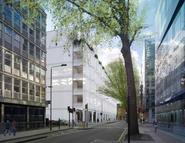Hannah Choi
Thursday 23rd May 2019
Time:4.00pm
Ground Floor Seminar Room
25 Howland Street, London, W1T 4JG
Bridging structure and computation of brain networks at multiple scales
The complex connectivity structure unique to the brain network is believed to underlie its robust and efficient coding capability. Specifically, neuronal networks at multiple scales utilize their structural complexities to achieve different computational goals. In this talk, I will introduce different approaches investigating close relationship between connectivity structure and computational strategies in brain networks.
The first part of the talk will focus on a generalized problem of linking structure and dynamics of the whole-brain network constructed from viral tracing experiments. By simulating large-scale brain dynamics using a data-driven network of phase oscillators, we show that complexities added to the spatially embedded whole-brain connectome by idiosyncratic long-range connections, enable rapid transitions between local and global synchronizations. Furthermore, we implement an unsupervised method to find the hierarchical organization of the mouse cortical and thalamic regions based on their anatomical connectivity patterns. The uncovered hierarchy provides insights into the direction of information flow in the mouse brain, which has been less well-defined compared to the primate brain.
I will then discuss computational implications of the hierarchical organization of the brain. In particular, I will focus on a specific type of computation – discrimination of partially occluded objects— carried out by a small cortical circuitry composed of an intermediate visual cortical area V4 and its efferent prefrontal cortex. I will explore how its structure and dynamics promote robust encoding of visual stimuli using predictive coding, a theory of cortical computation which has been proposed as a method to create efficient neural codes. Motivated by recent experimental results, we implement a predictive coding model of V4 and prefrontal cortex to investigate possible computational roles of feedback signals in the visual system and their potential significance in robust object recognition. Our model further infers the connectivity among different cortical neuronal populations.
In sum, our results demonstrate how network architecture and computational goals of the brain shape each other. The close link between structural complexity and computational versatility found in brain networks may be further applied to develop more efficient artificial neural networks and neuromorphic devices.
 Close
Close



_RGB.jpg)